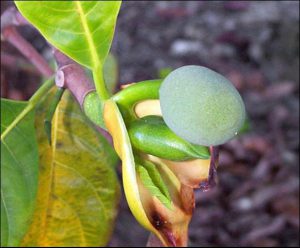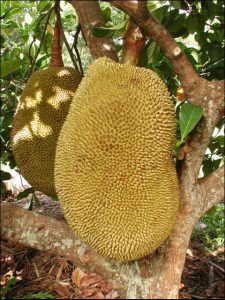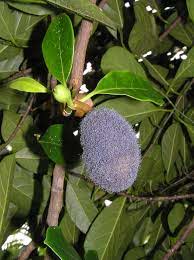There are many layers involved when delving into the wonderful world of jackfruit, but for now, we will focus on just two. The first layer, for those unfamiliar with this tropical delicacy, is “what in the world is jackfruit?”, and the second layer is “what in the world is happening to the jackfruit you’re trying to grow in your backyard?”
First things first: Jackfruit, otherwise known as Artocarpus heterophyllus, is a tropical fruit native to India. The trees average 30 to 40 ft. tall at maturity, which is quite impressive, but not as impressive as the fruit which the trees bear, averaging 10 to 60 lbs. per fruit. And with the typical yield for a healthy mature tree estimated at 50 to 100 fruit per year, that’s a lot of jackfruit to love (or hate)! Speaking of love-hate relationships, a ripe jackfruit makes its presence known to anyone nearby, with a pungent aroma often described as a cross between a very ripe pineapple and a banana. This hard to ignore smell makes it the kind of fruit people either adore or despise. The ripe fruit pulp is yellow and like most tropical fruit, very sweet, with a brix level of 15 to 25 degrees; compare this with the brix level of a Honeycrisp apple which is 13 degrees. Of interest to note too is that mature but unripe jackfruit, are a popular ingredient in many vegetarian dishes.



[Credits: UF/IFAS]
Next, let’s answer the second “what in the world…?” question about jackfruit. In late Spring to early Summer, as jackfruit trees begin the process of fruit set, the immature fruit can sometimes turn into fuzzy, alien-like structures. This is as a result of Rhizopus rot which is common in jackfruit. It is recommended that in order to save your jackfruit, applications of a broad spectrum copper fungicide spray should be made, according to label directions, shortly after fruit set.
[Credits: pestnet.org; Flickr.com]
Visit the links below to learn more:
 0
0



